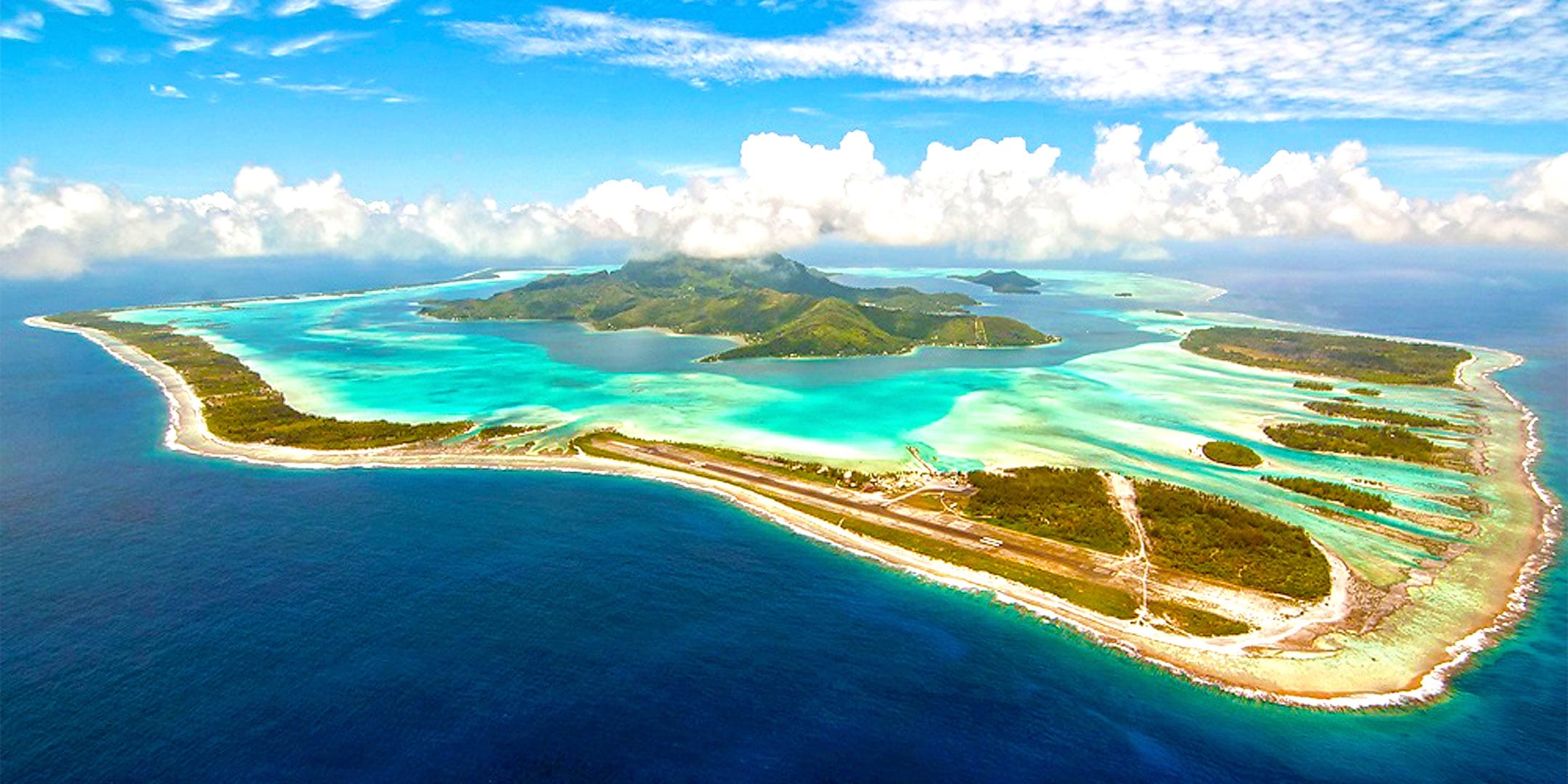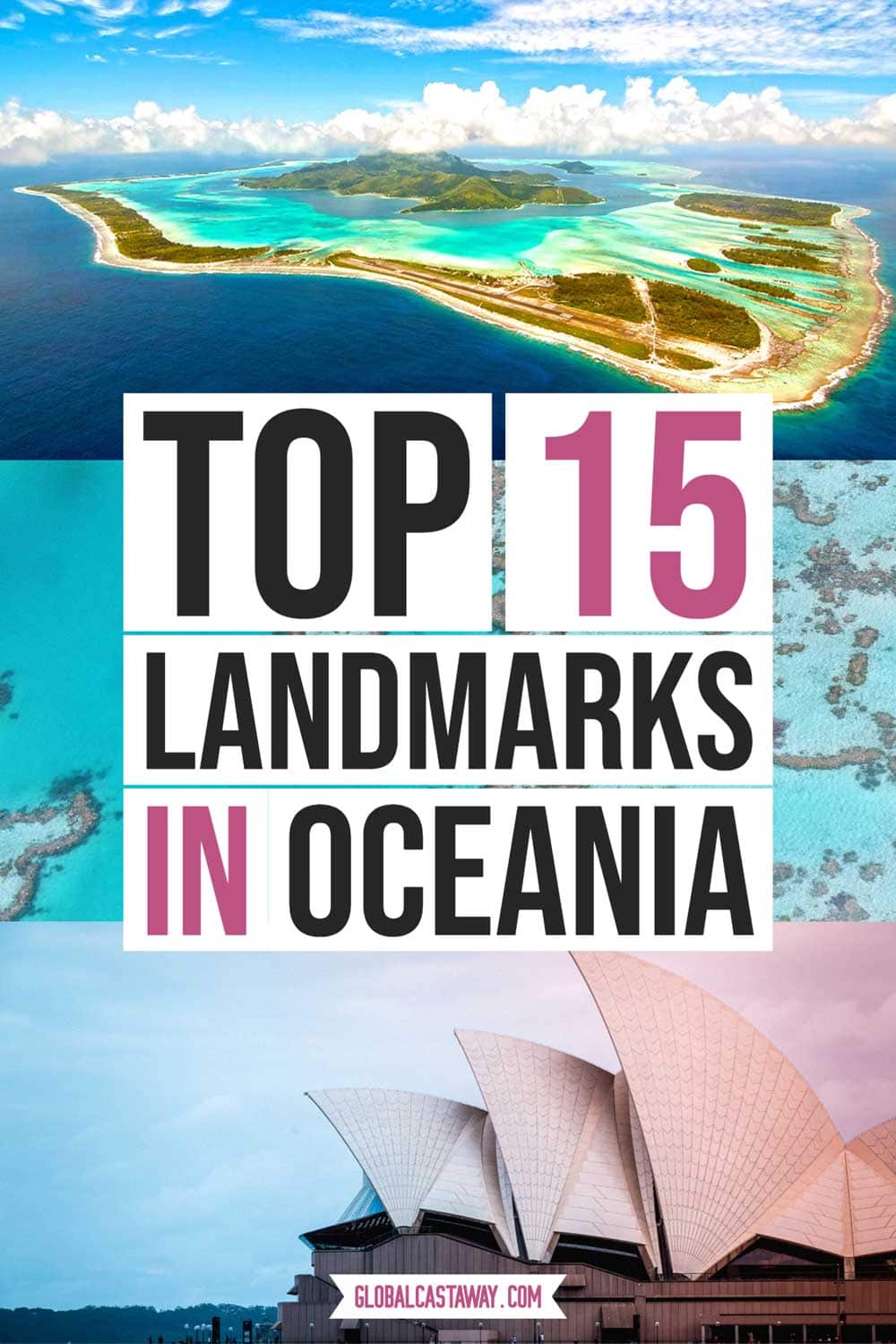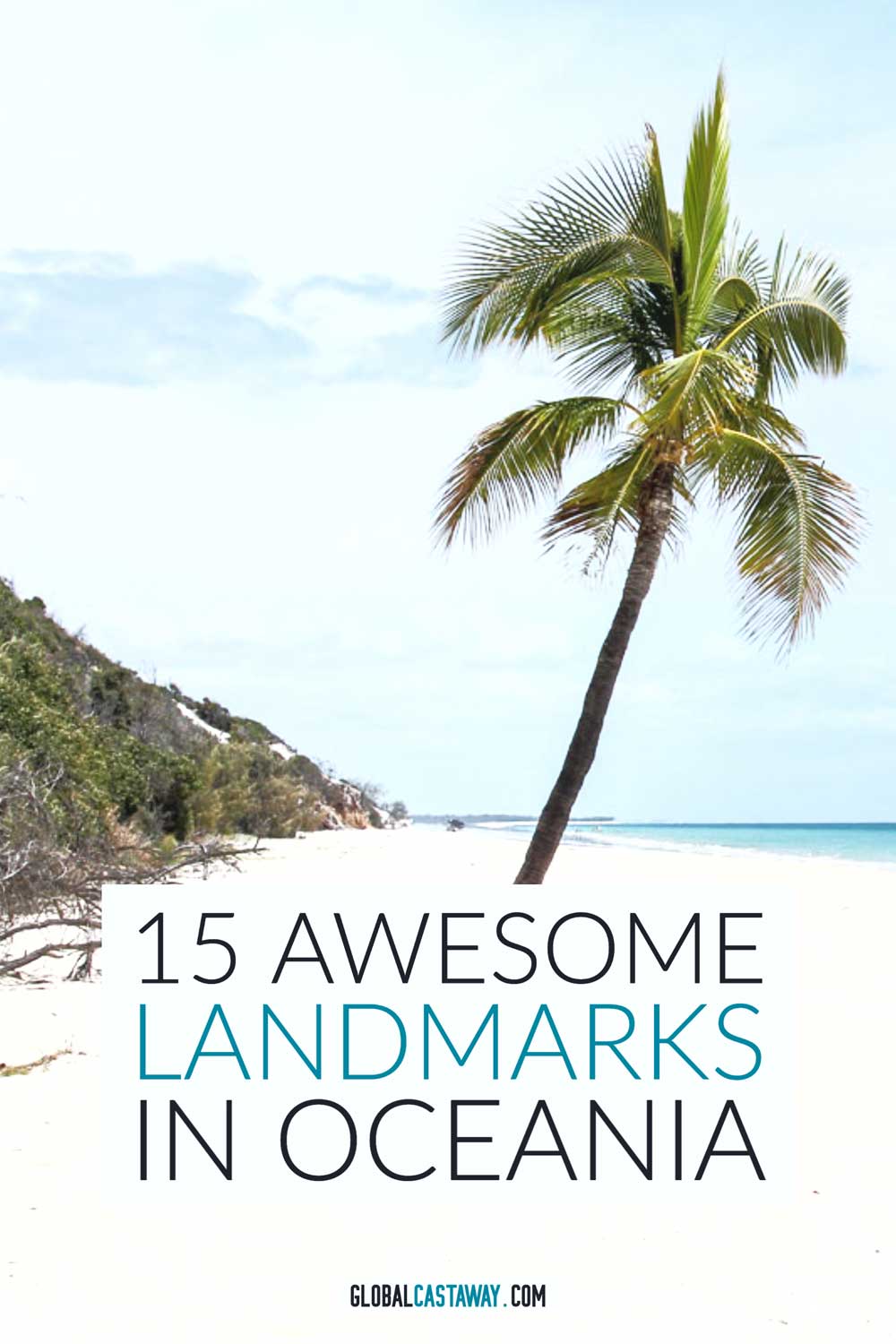Embarking on a journey around the biggest landmarks in Australia and Oceania is the most tropical adventure ever. Although the sea continent has a small number of countries and most of its landmarks are situated in Australia, the landmarks themselves are so unique that no self-respecting traveler would leave them out of their bucket list.
From the most famous opera house in the world to a stingless jellyfish lake, prepare to embark on the most exotic adventure of your life because those are the most significant landmarks in Australia and Oceania:
Great Barrier Reef
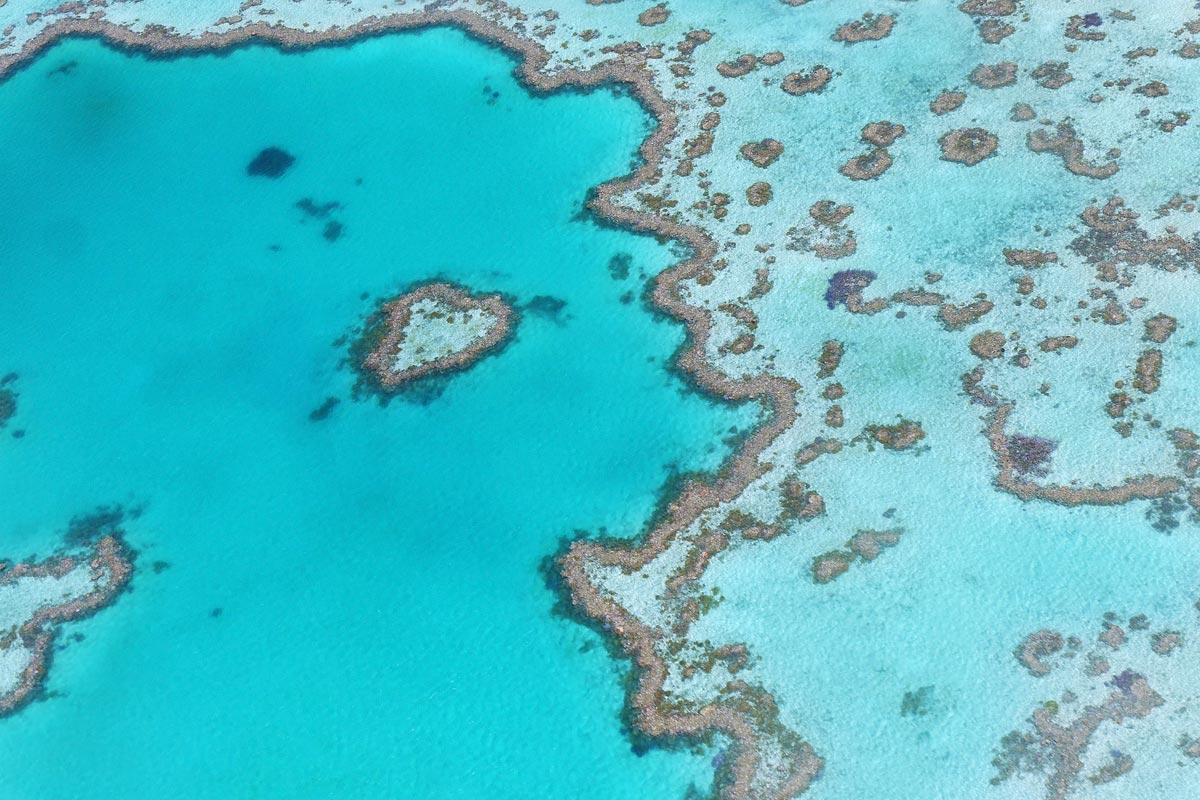
We start the biggest landmarks in Australia and Oceania with something symbolic for the entire continent. I promised you a tropical adventure, and there’s nothing more tropical than a coral reef. And there’s no coral reef in the world more amazing than Australia’s Great Barrier Reef.
Voted as one of the seven natural wonders of the world, the Great Barrier Reef is the largest reef on the planet, and it’s estimated to be millions of years old. Around 2 million people visit it every year and generate 5-6 billion dollars that contribute massively to the reef protection.
Even though a large part of the Great Barrier Reef is protected as a National Park, a study published in 2020 found out that half of the reef’s coral cover has been lost between 1995 and 2017. According to some scientists, the bleaching will continue to decimate the Great Barrier Reef, so if you want to visit, better make it soon (and make sure you use coral-friendy sunblock, please).
Uluru
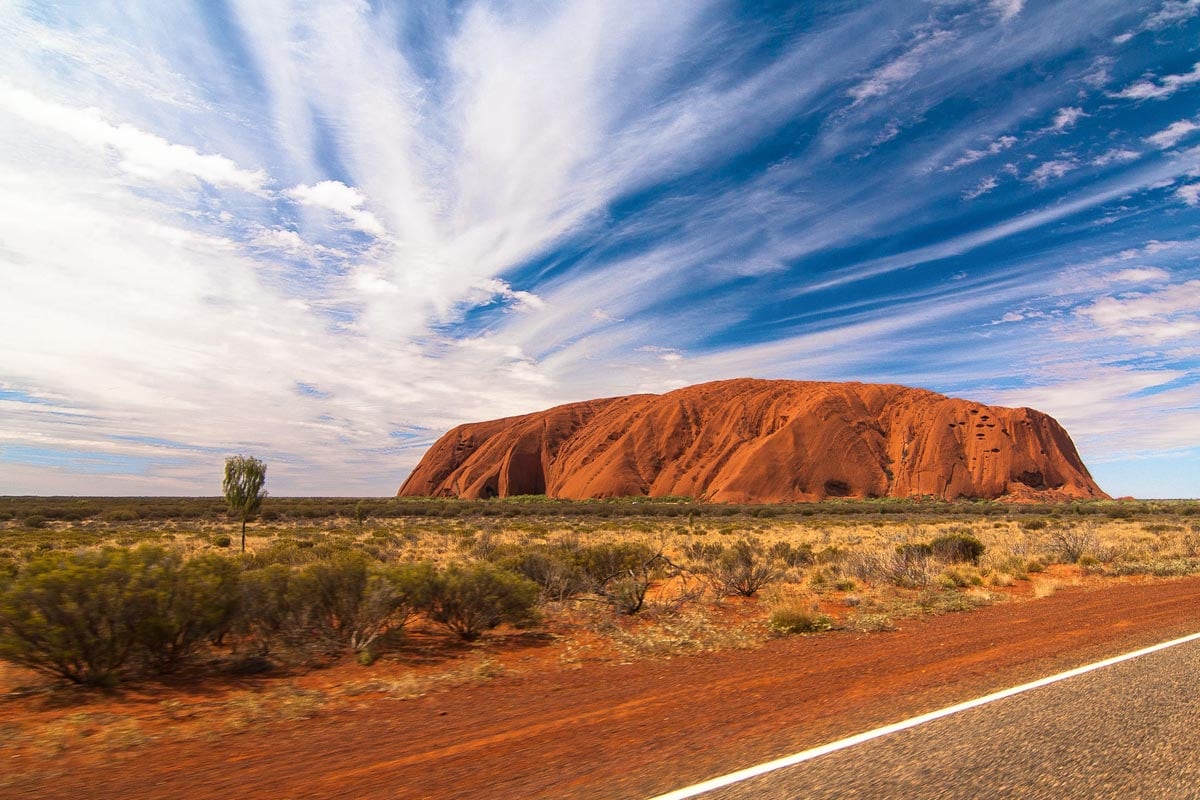
Rising 348 meters (1150 ft) above the surrounding plain, Uluru is the most popular natural land attraction in Australia.
Situated in the Red Centre of the country, the giant rock formation can be found inside the Uluru-Kata Tjuta National Park, a park listed twice as a UNESCO World Heritage Site – one in 1987 for its unique geology and again in 1997 for its cultural significance to the Aboriginal people.
Even though the Uluru scenery is a bit desert-looking, the area receives around 300mm of rainfall per year that is apparently enough to host over 400 plant species and 21 mammal species.
Sydney Opera House
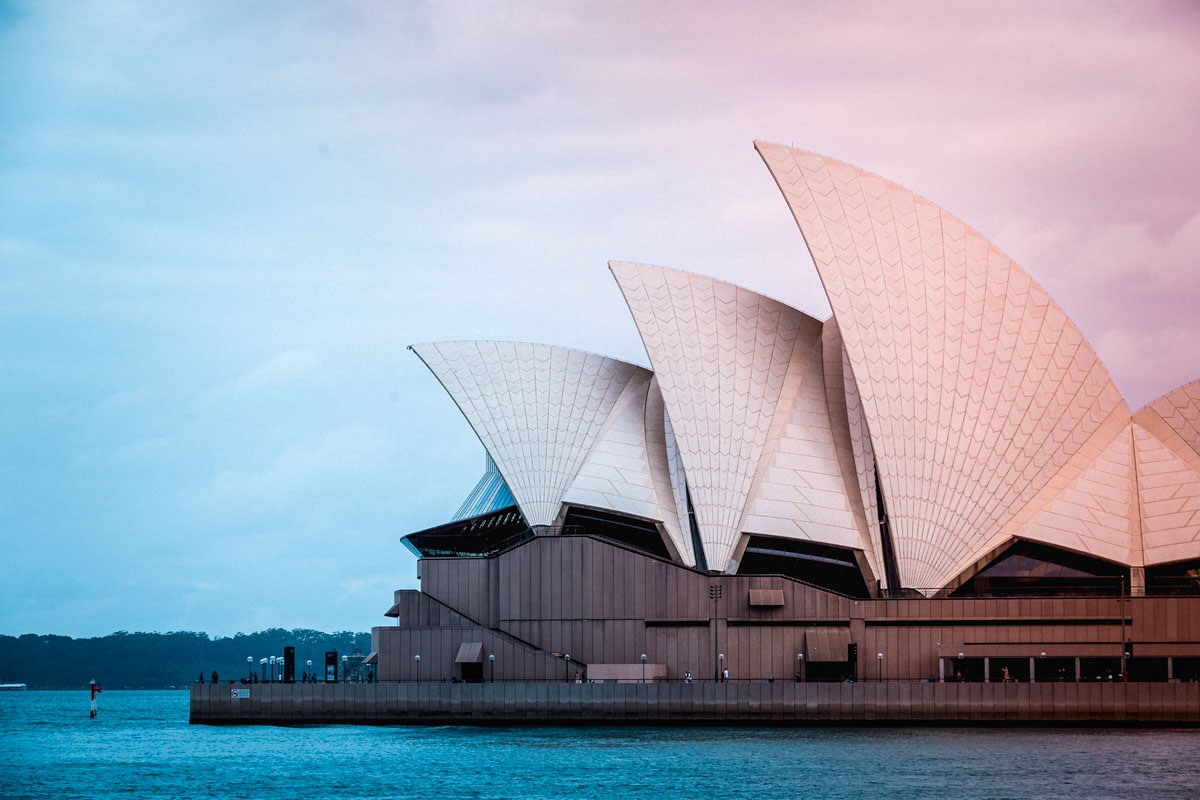
One of the most significant landmarks in Australia and a symbol of the country, the Sydney Opera House, was completed in 1973, and to this day, it’s the most revered building on the continent.
The construction of the opera took 14 years and went over the budget quite a lot. While the original cost estimate was seven mln dollars, in the end, the final cost of the project was around 102 mln dollars. Thankfully, the State Lottery funded almost everything.
Dedicated as a UNESCO World Heritage Site in 2007, the Sydney Opera House is visited by nearly 11 mln people per year, making it the most popular building in Australia.
Kangaroos and Koalas
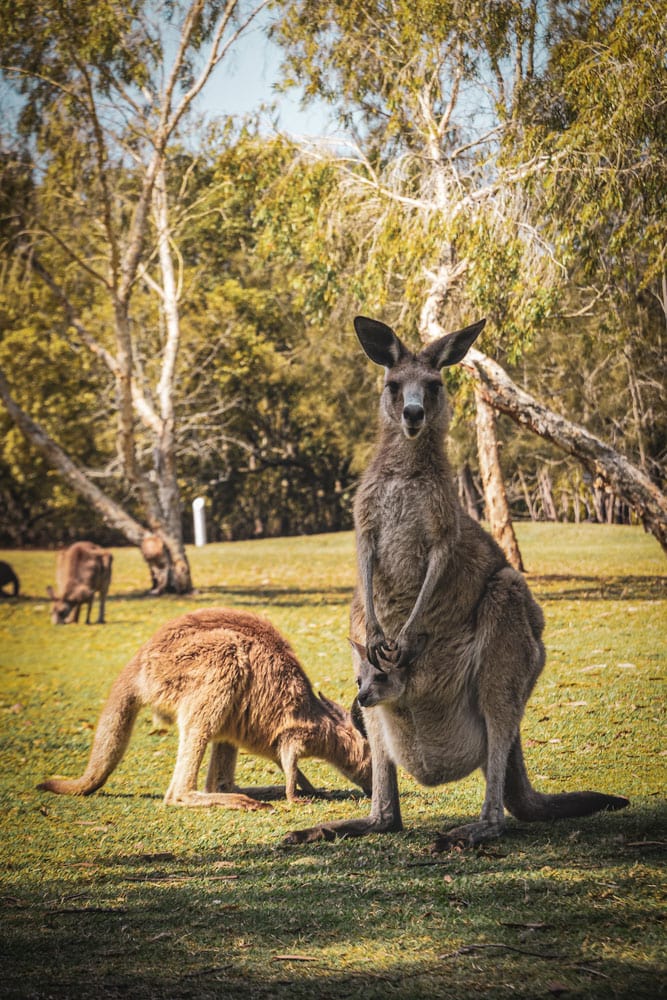
Talking about landmarks in Australia, we can’t fail to mention the wildlife. While it’s neither a building nor a natural site, Australia’s flora and fauna are so unique that they serve as the country’s biggest symbol.
I mean, the Opera House is pretty famous and all but what comes to your mind when you see a kangaroo? That’s right, Australia!
Being basically a giant island, it’s not surprising that over 93% of all living species in Australia are endemic. The most famous ones are the above-mentioned kangaroos, the cute koala bears, the odd platypus, and the always smiling quokka.
Lake Hillier
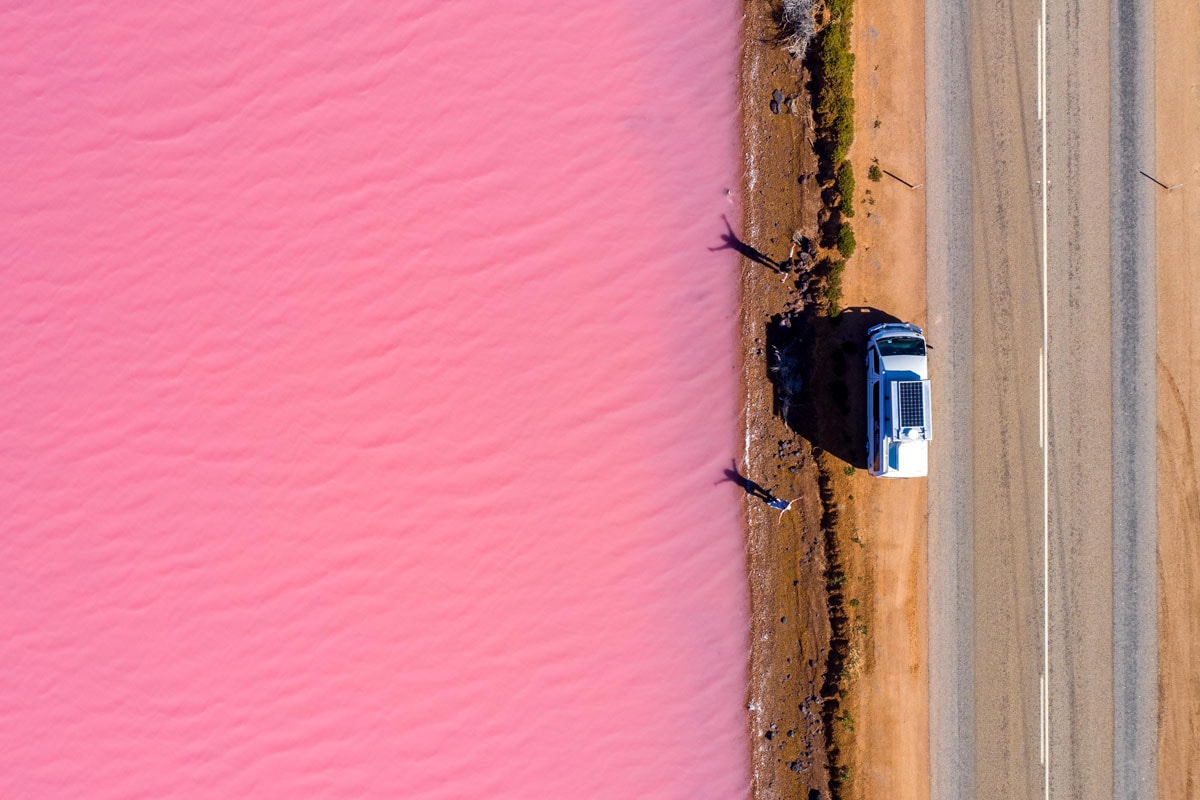
Pinky Lake Hillier is located on Middle Island in Western Australia, and even though it’s not the only pink lake in the world, it’s by far the most famous one.
Being around ten times saltier than the nearby ocean, lake Hillier is rimmed in a salty crust that gives an even more exotic look to the already peculiar sight.
Despite the enormous amounts of salt, the lake is safe to swim in. You can also fill a bottle of its pink waters because, unlike the other pink waters around the world, Lake Hillier’s color does not change when water is transferred to a container.
The most curious part about the lake is that the scientists can’t agree on the reason for its pink water. The leading hypothesis is that it’s due to the Dunaliella salina microalgae.
Fraser Island

Considered to be one of Australia’s most unique destinations, Fraser Island is among the most popular places to visit on the east coast.
A UNESCO World Heritage Site since 1992, Fraser Island is also the biggest sand island in the world.
Blending shifting sand-dunes, tropical rainforests, and pristine lakes into the postcard-perfect tropical Eden, Australia’s most famous island is named after Captain James Fraser, who is rumored to have starved to death there.
Home to over 100 freshwater lakes, including the stunning Lake McKenzie, Frase Island is one of the world’s most visited islands and undoubtedly among the most significant landmarks in Australia and Oceania.
See Also: Top 20 Biggest Landmarks in Asia
Ubirr Rock Galeries

Located inside Kakadu National Park, Ubirr Rock Galleries display some of the world’s most significant rock art paintings. Depicting stories of local law and behaviors, the rock gallery’s most intriguing painting is the one of the Tasmanian tiger (not to be confused with the Tasmanian devil), believed to have become extinct on the mainland 2,000-3,000 years ago.
The art in Ubirr is sacred to the local Aboriginal people, and today it’s being protected not only by the Australian government but also by the neighboring clans of Bunitj, Manilagarr, and Mandjurlgunj.
Tasmania
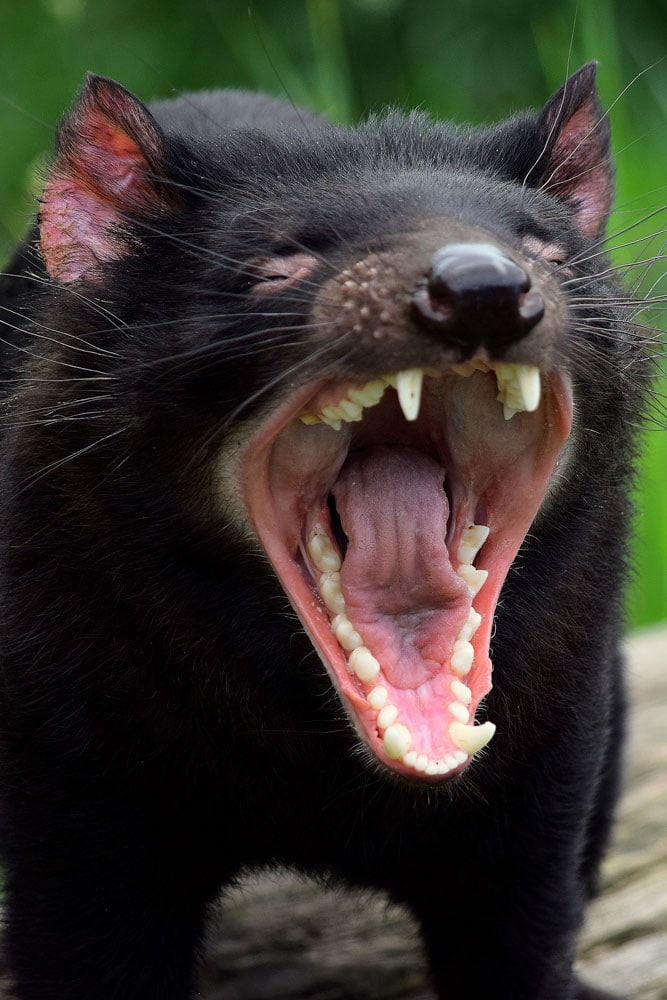
Remember crazy Taz from Loony Toons? The weird creature that liked to spin into a tornado, and we all thought it was made up. I mean, Tasmanian devil, cmon that can’t be a real thing!
Imagine my surprise when I found out those creatures do exist (although they can’t make tornados), and Tasmania is actually a real place on the map.
Situated around 240 km (150 mi) to the south of mainland Australia, Tasmania is not only home to the peculiar Tasmanian devils but is also one of the biggest landmarks in Australia and Oceania. Nicknamed the Apple Island (due to its shape, not because they like iPhones), Tasmania is roughly the size of Ireland, and almost half of it is either a World Heritage Area, national park, or marine/forest reserve.
Tasmania is proud of its 69 golf courses, including the oldest golf course in the Southern Hemisphere, and its water purity. Yes, the water on the island is so pure that there’s even a health department approved bottled rainwater, the only one in the world.
Hobbiton
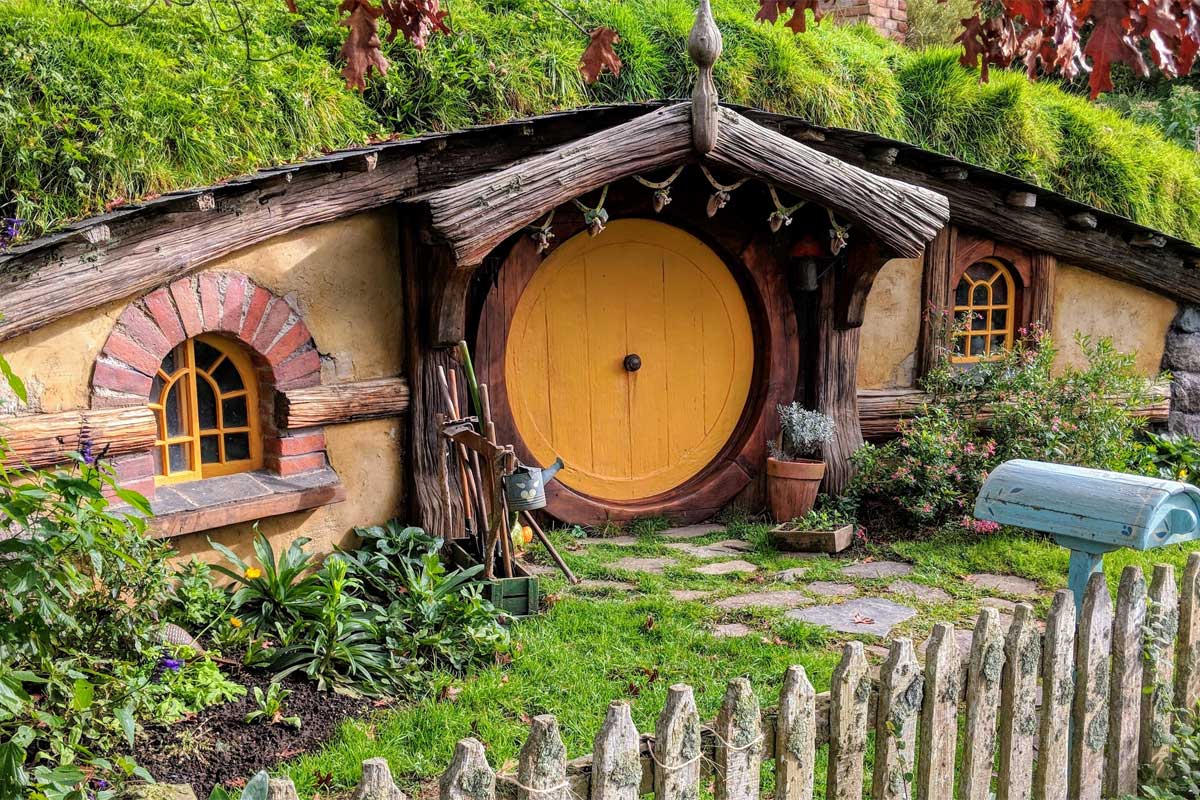
We leave Australia behind to head to New Zealand, where we find one of the most visited landmarks in Oceania and Middle Earth. Located just 2 hours away from the Kiwi capital – Auckland, Hobbiton is the ultra-realistic movie set that Peter Jackson used for his Lord of the Rings trilogy.
Stretching over 4.8 hectares and housing 44 hobbit holes, New Zealand’s Shire is made with such attention to detail that sometimes it’s impossible to distinguish the props from the real things (especially when it comes to trees).
If you ever find yourself in Hobitton, make sure to visit the Green Dragon Inn. A real and totally operating hobbit pub that offers some Middle Earth delicacies.
Milford Sound
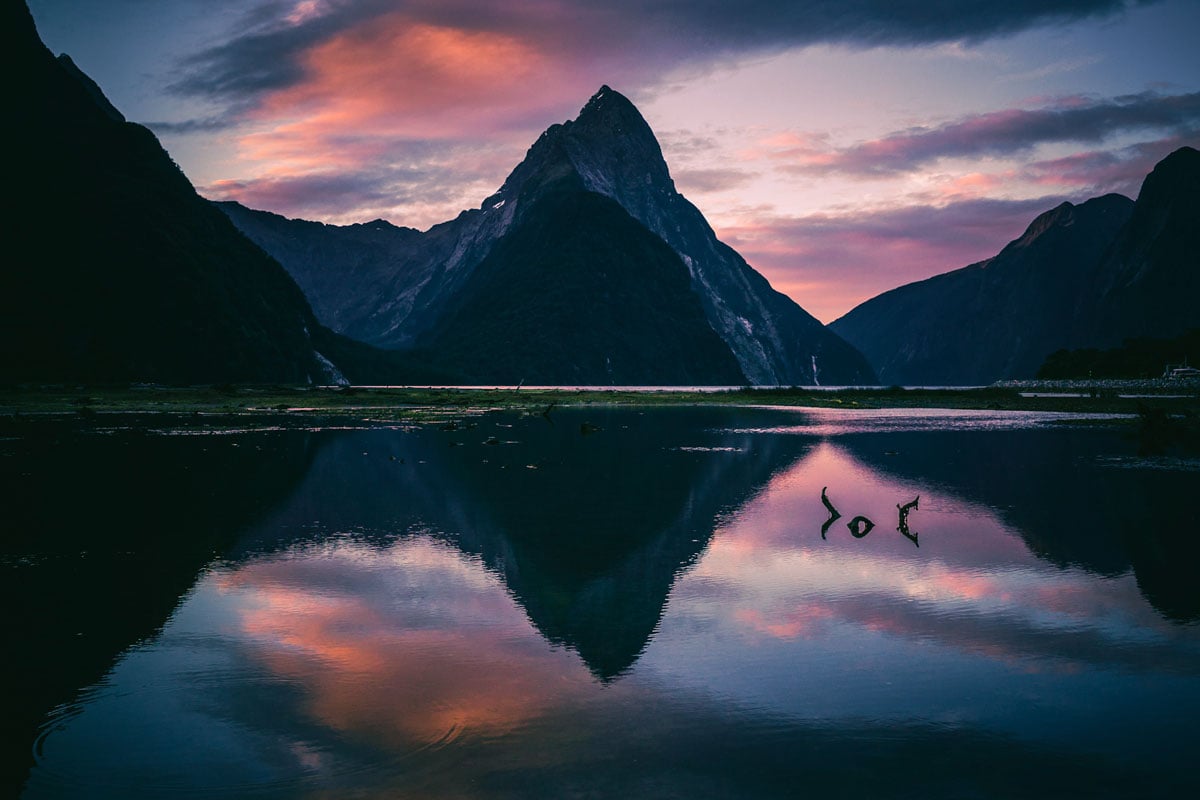
The top attraction of New Zealand’s Fiordland National Park, Milford Sound is one of those places that make you feel like stepping into a postcard.
A UNESCO World Heritage Site since 1990, Milford Sound is one of the most iconic and popular places in the country, welcoming around a million visitors per year.
If you decide to be part of this million, make sure you get your umbrella because the fjord is considered one of the wettest places on Earth, registering an average of 182 days (full 24 hours) of rainfall per year.
Wai-O-Tapu

We continue our top landmarks in Oceania with the thermal wonderland of New Zealand – Wai-O-Tapu. The incredibly active geothermal area may not be as famous as the other attractions on the list, but it’s certainly not less enchanting.
Combining multiple colorful hot springs, including the famous Champagne pool, with boiling mud pools and spectacular geyzers, Wai-O-Tapu (translating from Maori to Sacred Waters) is one of the most highly rated attractions in the country and something you should definitely consider having on your Oceania bucket list.
The Jellyfish Lake
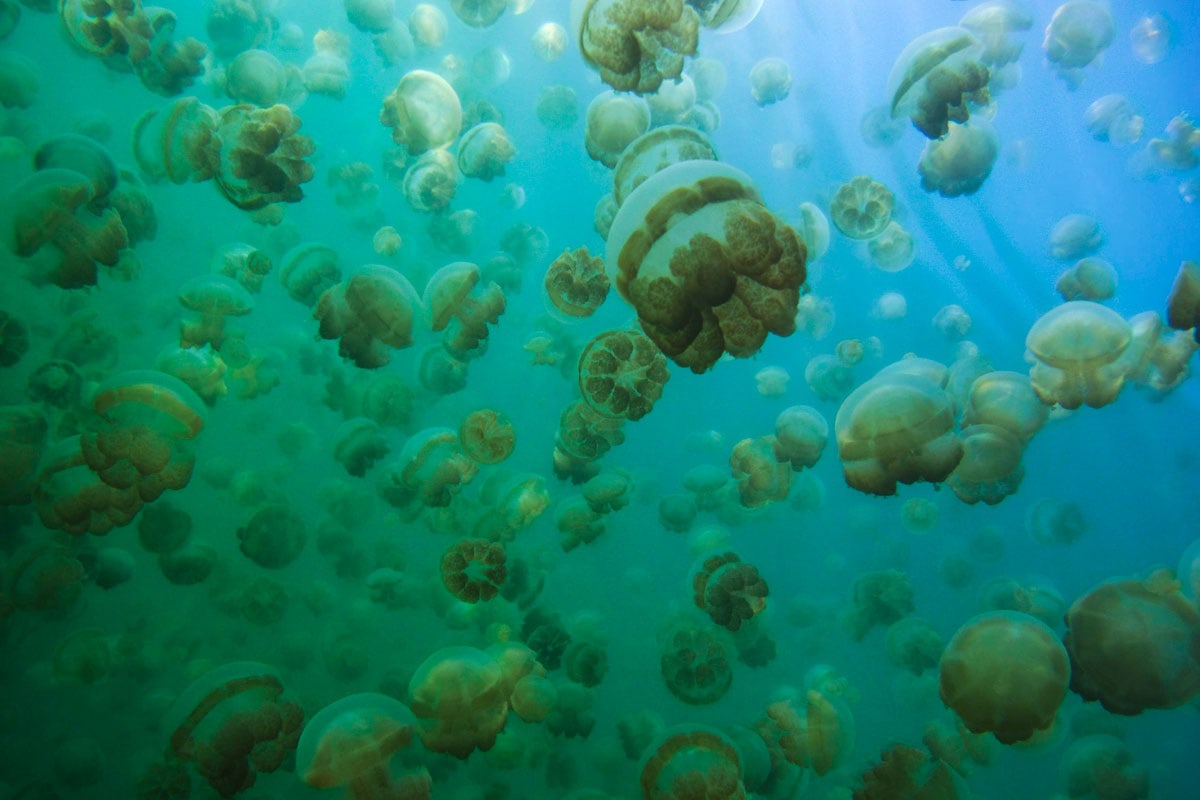
Located on Eil Malk island in the not-so-famous country of Palau, this next attraction is one of my favorites. Named simply Jellyfish Lake, this incredible feat of nature gives you the chance to take a swim in a sea of jellyfish.
Before you declare me insane, you should know those jellyfish are a special non-stinging kind, and there’s nothing dangerous or painful in the whole adventure. It feels like swimming among pieces of jello. An incredibly peculiar and unique experience you can brag about for years.
See Also: Top 20 Landmarks in Africa
Jean-Marie Tjibaou Cultural Centre

To find the next Oceania landmark, we travel all the way to… France. I’m joking, of course, this post is not about the biggest landmarks in Europe (I do have one of those, though), but our next attraction is indeed located on French territory and most specifically in New Caledonia.
Tjibaou Cultural Centre is situated on the narrow Tinu Peninsula and celebrates the indigenous people of New Caledonia – the Kanak.
Named after New Caledonian independence leader Jean-Marie Tjibaou, the complex was built in the late 1990s as a symbol of unity between the French and the people of New Caledonia.
It’s designed with many references to Kanak’s traditional architecture and displays examples of genuine Kanak traditions, languages, craftsmanship, and arts.
Mount Yasur
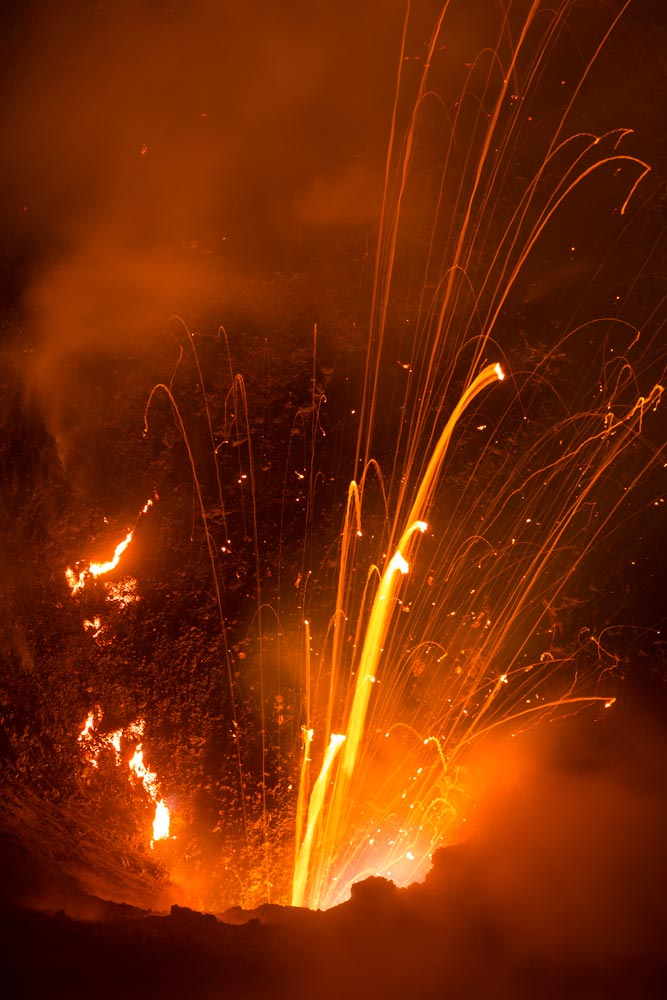
Can you imagine I almost missed having a volcano in my top landmarks in Oceania list? Thankfully red hot Vanuatu had the perfect one for the job.
Located on Tanna Island, Mount Yasur is a 361 meters (1,184 feet) tall active volcano that is considered one of the world’s most easily accessible live volcanoes.
Captain James Cook was the first European to discover Mount Yasur, and ever since then, the mountain has been known as the lighthouse of the Pacific due to its continuous Strombolian and volcanic activity.
Even though approaching the crater of Mount Yasur is a pretty dangerous activity (you’re at risk from projectiles, toxic gas, and even avalanches), staring at the boiling heart of something as powerful as a volcano is a once-in-a-lifetime experience.
Bora Bora Lagoon
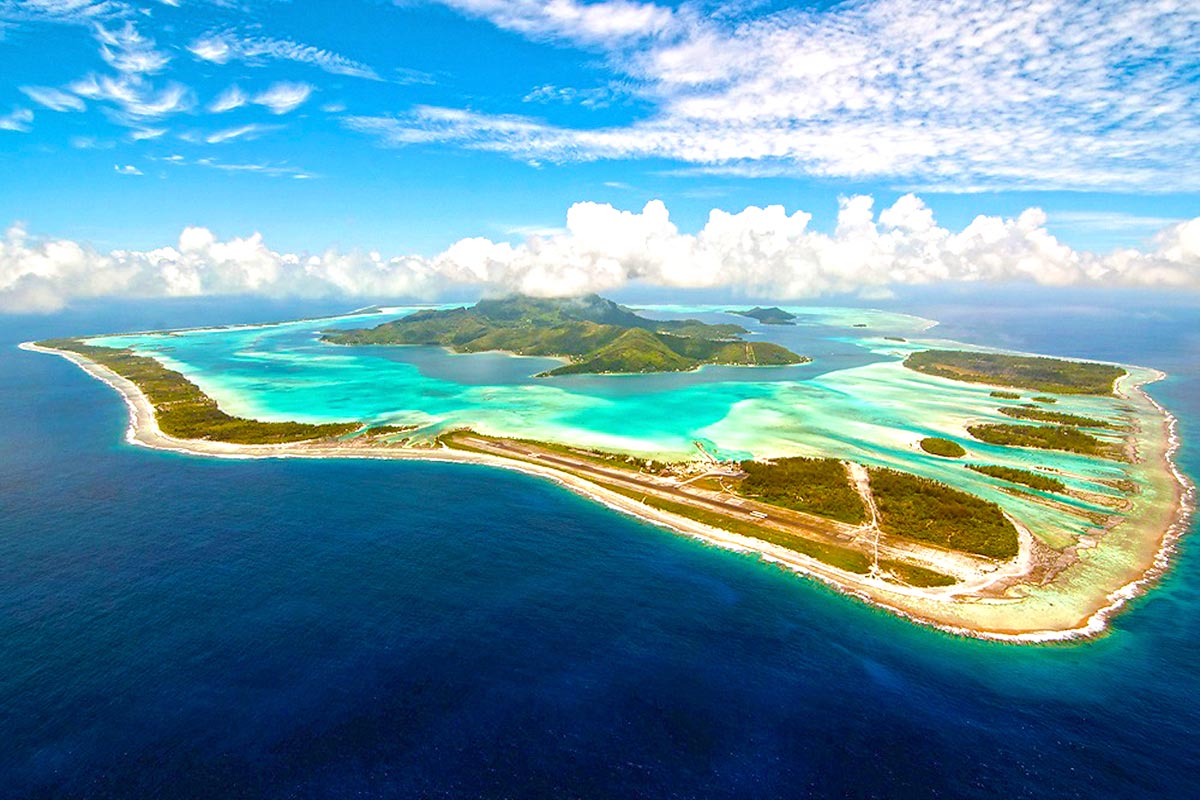
We cap the top landmarks in Oceania with one of the most exotic places on Earth. Located in French Polynesia, Bora Bora Lagoon is the synonym of tropical Eden. And indeed, just look at any picture from Bora Bora. No matter if it’s a picture of the whole lagoon or a photo of any of its beaches. The place is pure magic.
From enchanting white-sand beaches to pristine blue waters, there’s no person on the planet who doesn’t fancy a Bora Bora vacation. Undoubtedly one of the biggest attractions in Oceania and the tropical world.
That’s all from me, I hope you enjoyed the biggest landmarks in Australia and Oceania.
————————————
If you haven’t planned your trip there yet, find out how I plan my trips!
————————————
I have 93 bucket list ideas for Oceania. See my impossible bucket list of 1700+ adventures!
How many landmarks have you been to?
Some of the above are affiliate links and I will earn a percentage of the sale if you purchase through them at no extra cost to you. This helps keep my site running – so thanks in advance for your support!


